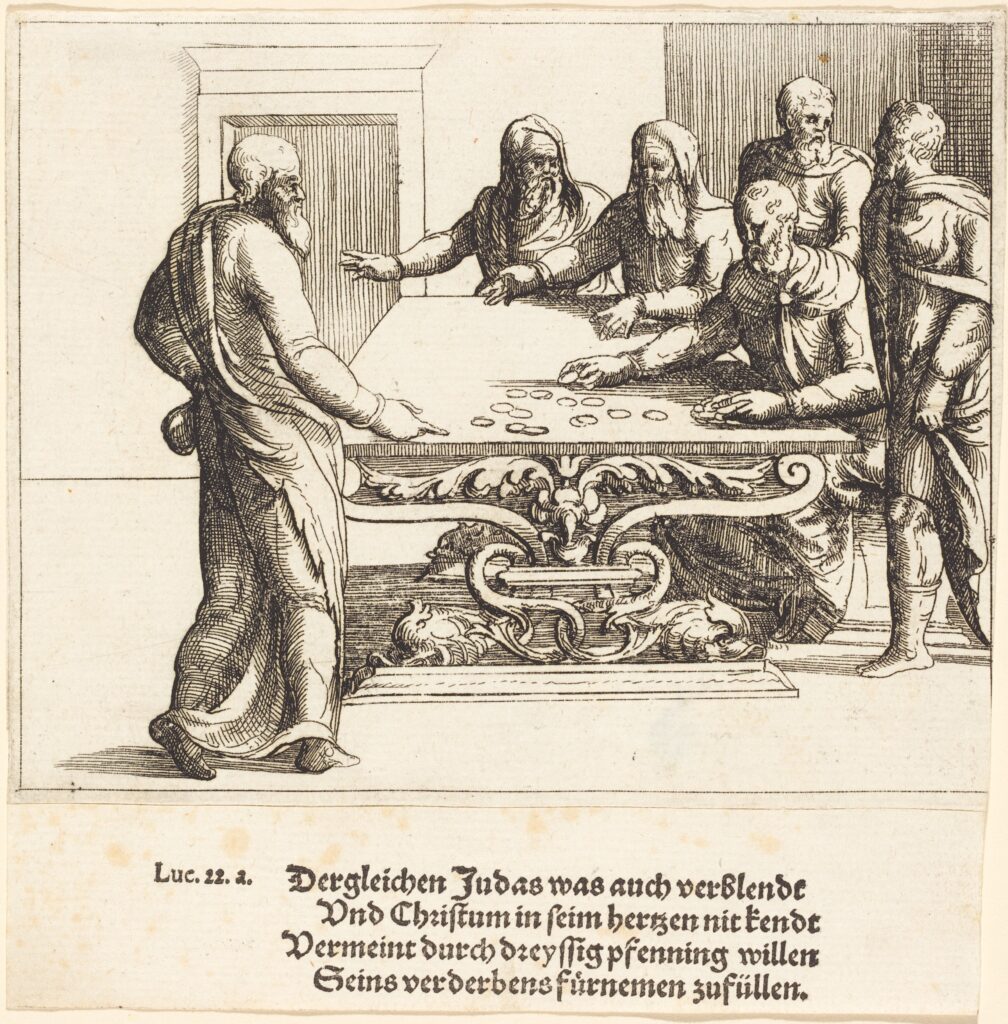
The Ensnarement of Christ
In the progression of Holy Week, after Palm Sunday, Holy Monday, and Holy Tuesday comes Holy (Spy) Wednesday, the day on which the Church remembers Judas’s betrayal of Jesus.
With “spy” stemming from medieval French and English words that reference an ambush or ensnarement, this day is a particularly solemn occurrence within Holy Week. It is the beginning of the events that lead up to the crucifixion of Jesus on Good Friday.
Looking at where the day falls in the progression of the week, the Bible tells us that after Tuesday’s events, Jesus and his disciples spent the day resting in Bethany, in anticipation of the Passover. However, there are not many other details regarding what the actions of our Lord were other than that.
Instead, Scriptures for the day primarily focus on Judas, the “spy,” who sought an opportunity to betray Jesus, going to the Sanhedrin and offering to deliver him to his enemies in exchange for thirty pieces of silver. The synoptic gospels all include an account of the betrayal (Matthew 26:12-14, Mark 14:10-12; and Luke 22:3-6), the basis for day’s readings. However, this turning point in the Passion story, while dramatic, is not necessarily surprising. Judas, always last in the list of disciples, is previously foreshadowed in the Bible as a thief. John 12:6 notes that “he had the money box he used to take what was put into it.”
Thus, the events of exchange on Wednesday provide the basis for the ever-quickening story of Holy Week that finally brings us to the foot on the cross just two days later. Judas’s trade with Jesus’ enemies is really a catalyst for the next day’s events and Judas’s public betrayal of his master, when an armed guard of the Sanhedrin accompanied Judas as he met Jesus in the Garden of Gethsemane, following the Last Supper. In doing so, the prophecies were fulfilled that Christ would be betrayed by a “close friend in whom [he] trusted” (Psalm 41:9) and given over for “thirty pieces of silver” (Zechariah 11:12-13).
A Brief History
In the grand scheme of Holy Week, Spy Wednesday has long been the day designated for the commemoration of Christ’s betrayal, reminding Christians of the events that Jesus lived in the last days before his death.
Serving as a day that falls right before the rest of the highest days of Holy Week, Spy Wednesday prepares Christians for the emotional work that will occur through the trek through Maundy Thursday, Good Friday, and Holy Saturday. Just as Jesus and his disciples rested, Spy Wednesday is a day meant for further solemn reflection and meditation on the Passion of Christ. Like them, we will surely need the physical and emotional rest to endure the rest of the trek to the cross.

Collect
Grant, we beseech Thee, Almighty God: that we, who for our evil deeds are continually afflicted, may mercifully be relieved by the Passion of Thine only-begotten Son; who liveth and reigneth with the Thee and the Holy Ghost: ever one God, world without end. Amen.
Lessons
Resources
Issues, Etc. interview with the Rev. Dr. Peter Scaer on the Events of Holy Week

Propers found in Daily Divine Service Book: A Lutheran Daily Missal, edited by the Rev. Heath Curtis
Images:
1. The Payment of Judas, Augustin Hirschvogel, Germany, ca. 1503-1553.
2. Pact of Judas, Duccio di Buoninsegna, Italy, ca. 1308-1311.
References:
1. Bryan Wolfmueller, “Devotional Tools for Holy Week,” The Lutheran Witness, April 10, 2022, https://witness.lcms.org/2022/devotional-tools-for-holy-week/



This is a beautiful summary of a difficult but true story of our Lord’s short life. Thank you for your effort in organising these important truths.